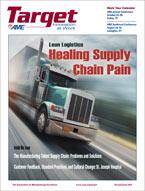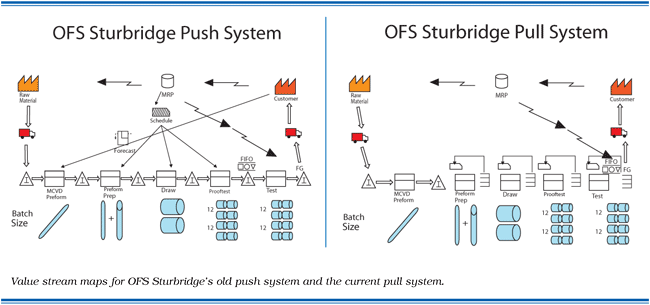 |
Mercury Wire and OFS share their experiences and learnings from implementing lean and pull systems. Strategies and results at each company vary; commonalities include their focus on providing customer value, nurturing cultural change, and continuing performance improvements.
At a recent two-day AME “kick the tires” workshop held in Massachusetts, two companies, Mercury Wire and OFS, showcased their lean implementations and the pull systems used in their facilities. They also shared their approaches to teaching and training employees about the benefits of pull systems, and one of the companies showed how they have applied pull concepts to project management. This article provides a description of pull system basics, followed by an explanation of how the companies utilize their pull systems as a key element in implementing the lean philosophy.
Tim McMahon, OFS lean manufacturing leader, presented value stream maps for OFS Sturbridge’s old push system and the current pull system (see the accompanying illustration).
OFS Sturbridge has gone beyond using this approach to facilitate timely production and material transfers between processes. Increased visibility across the processes allowed the facility to develop teamwork for identifying and eliminating workload imbalances between the processes, helping to reduce backlogs.
Both organizations view pull signals and pull scheduling methods not just as tools but as part of a larger lean philosophy that is used to solve problems and serve customers.
There is a lot of valuable information in this article that goes well beyond the simplicity of pull. Hopefully you can see applications for pull systems in your organization beyond just material. This should also give you an inside view to what I do as a Lean Practitioner in manufacturing.
Stay connect to A Lean Journey on our Facebook page or LinkedIn group.
Follow me on Twitter or connect with me on Linkedin.
You can also subscribe to this feed or email to stay updated on all posts.




No comments:
Post a Comment